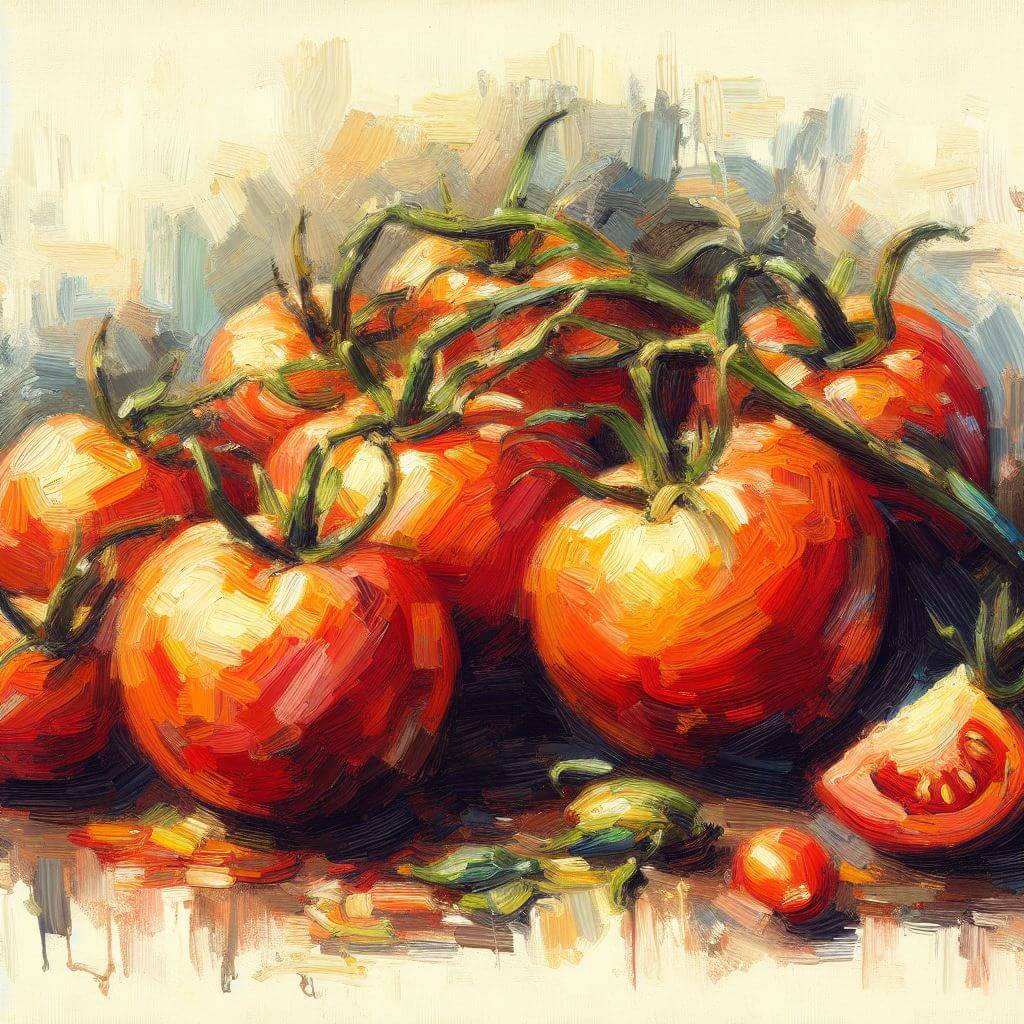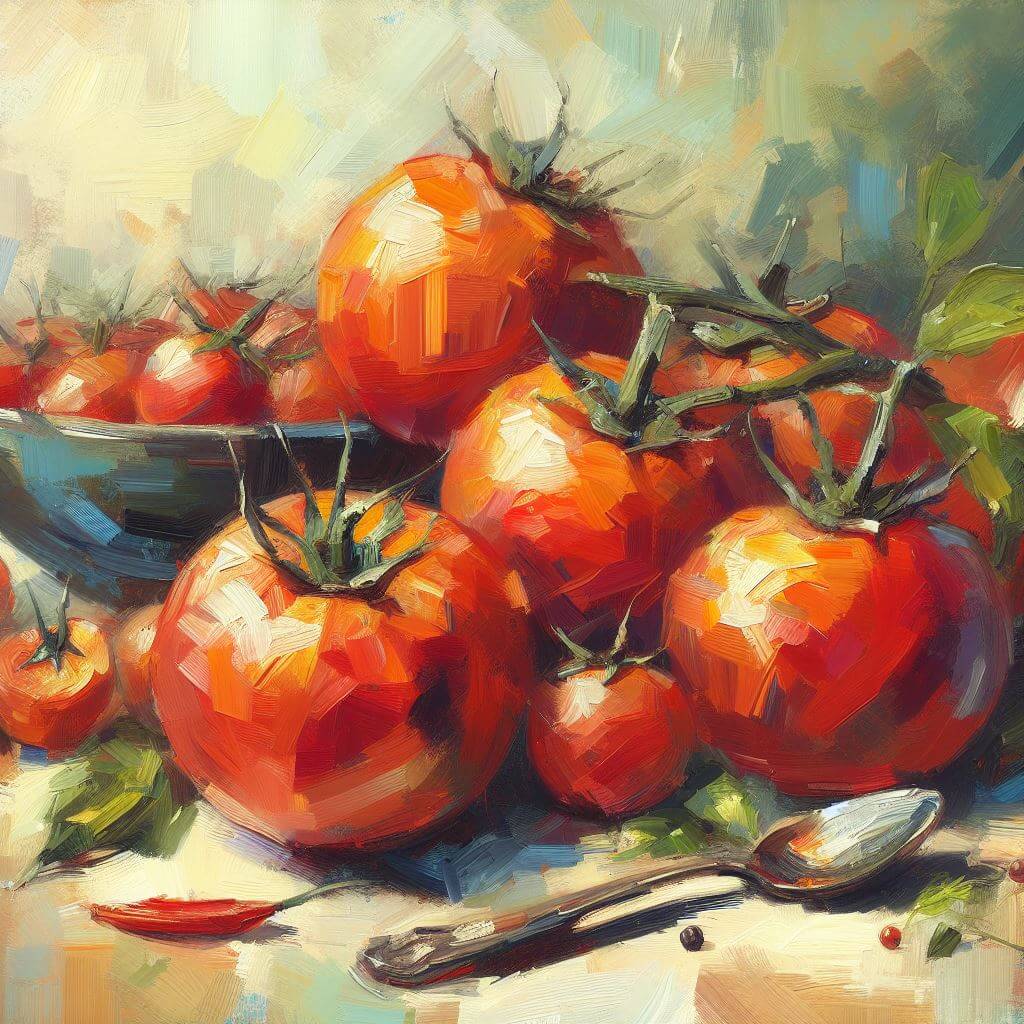
Tomatoes are not just a vital ingredient in many of our favorite dishes, but growing them can also be a fulfilling hobby. Imagine walking into your backyard and picking a fresh, juicy tomato right off the vine!
About Tomatoes: The Red Jewels of the Garden
Tomatoes are beloved for their taste, versatility, and nutritional value. They abound in vitamins A, C, and K, and are a great source of potassium. Plus, they’re rich in lycopene, an antioxidant linked to various health benefits. Growing your own tomatoes not only offers a healthier choice but also adds a sense of accomplishment to your everyday cooking.
Tomato Growing Conditions in New Hampshire
New Hampshire boasts a changeable climate with significant variations in daily and seasonal temperatures, influenced by its proximity to the ocean, mountains, and lakes. The state experiences all four seasons, with short, cool summers and long, cold winters. This unique climate creates a distinctive environment for growers, making it an exciting challenge.
The soil in New Hampshire tends to be quite acidic, with pH levels ranging from 4.5 to 5.5, while tomatoes prefer a pH level between 6.0 and 6.8 for optimal growth. This acidity can pose challenges for cultivation and requires careful management to create suitable conditions.

Best Time to plant tomatoes in New Hampshire
Timing your planting right can be the difference between a bountiful harvest and a disappointing yield. Generally, the ideal time to plant tomatoes in New Hampshire is late spring, around the last frost date. This is usually between mid-May and early June. Planting during this period allows the tomatoes to make the most of the summer growing season.
When to Plant Tomatoes in New Hampshire: Region-Specific Recommendations
Northern New Hampshire
This region includes areas like Lancaster and Berlin. It’s characterized by a colder climate and shorter growing season. The most suitable time to plant tomatoes here is late May to early June, once the soil has warmed adequately.
Southern New Hampshire
This region includes areas like Manchester and Nashua, and enjoys a slightly warmer climate compared to the northern region. Here, you can typically plant tomatoes in mid to late May, following the last frost.
Eastern New Hampshire
This region includes areas like Portsmouth and Dover. Being close to the Atlantic Ocean, it has a relatively moderate climate. The ideal window to plant tomatoes usually begins around mid-May, after the risk of frost has passed.
Western New Hampshire
This region includes areas like Keene and Claremont. It’s characterized by a slightly warmer and drier climate compared to the eastern region. The best time to plant tomatoes is mid-May, once the soil has warmed and the risk of frost has receded.
Central New Hampshire
This region includes areas like Concord and Laconia, and experiences a balanced climate. Here, mid-May to late May is typically the best time to plant tomatoes, as frost is less likely, and the soil has warmed up enough to support tomato growth.

Step-by-Step Guide to Planting Tomatoes
Choose the Right Spot: Tomatoes thrive in sunny locations. Find a spot in your garden that receives at least six hours of direct sunlight each day.
Prepare the Ground: Tomatoes need well-drained, fertile soil. Prepare your chosen spot by removing any weeds or stones. Then, enrich the soil with compost or well-rotted manure to provide the necessary nutrients.
Dig the Right Hole: The hole for your tomato plant should be deep and wide enough to accommodate the root ball. A good rule of thumb is to dig a hole twice as wide and as deep as the root ball.
Plant the Tomato: Place your tomato plant in the hole. The top of the root ball should be level with the soil surface, or a bit lower since tomatoes can develop roots along the stem leading to a sturdier plant.
Backfill the Hole: Fill in the hole with the enriched soil, firming it gently around the base of the plant.
Water Generously: After planting, water the tomato plant thoroughly. This helps to settle the soil around the roots and ensures a good start for your plant.
Tomato Varieties Suitable for New Hampshire
Choosing the right variety is as important as knowing when and how to plant. The Granite State’s climate favors certain types of tomatoes, and selecting these can enhance your chances of a successful harvest. Here are some tomato varieties that thrive in New Hampshire:
Early Girl: As the name suggests, Early Girl tomatoes mature quickly, typically in 50 to 60 days. This makes them an excellent choice for New Hampshire’s relatively short growing season. They produce medium-sized, versatile fruits perfect for salads, sandwiches, or sauces.
Rutgers: This is a classic, all-purpose tomato with a rich flavor and a good balance of acids and sugars. Rutgers is a determinate variety, meaning it grows to a certain height, blooms, and produces all its fruit within a short period. This characteristic suits New Hampshire’s growing season well.
Brandywine: If you’re after a big, juicy beefsteak tomato, Brandywine is a great choice. It’s an heirloom variety known for its exceptional flavor. While it takes a little longer to mature (around 80-100 days), the taste of a homegrown Brandywine tomato is worth the wait.
Cherry Tomatoes: Varieties like Sweet 100 or Sun Gold mature quickly and yield prolifically. Their small, sweet fruits are a hit with kids and make a great addition to salads.
Mountain Fresh Plus: A favorite among commercial growers, this variety is valued for its disease resistance and consistent, high-quality fruits. It’s well-suited to New Hampshire’s conditions and yields large, flavorful tomatoes.
Remember, each variety has its own care requirements, so be sure to read up on the specific needs of your chosen type. With a bit of knowledge and care, you can enjoy a bountiful harvest of delicious, homegrown tomatoes.
Care Tips for Your Tomato Plants
Regular Watering: Tomato plants need consistent watering. Aim for at least one inch of water per week, more during dry spells.
Avoid Wetting the Leaves: When watering, aim for the base of the plant. Wet leaves can encourage fungal diseases.
Support Your Plants: Tomato plants can become heavy with fruit. Provide support using stakes or cages. This not only keeps the fruit off the ground, reducing the risk of disease, but also makes harvesting easier.
Mulching: Mulch around the base of your plants to conserve water, suppress weeds, and regulate soil temperature. Organic mulch, like straw or compost, can also add nutrients to the soil.
Regular Check-ups: Keep an eye on your plants for any signs of pests or diseases. Early detection can make treatment more effective.

Fertilizing Your Tomato Plants: Boosting Growth
Tomatoes are heavy feeders, meaning they require more nutrients than many other plants. To ensure your tomatoes grow healthy and productive, regular fertilization is essential. Use a balanced vegetable garden fertilizer, following the instructions on the package. Begin fertilizing when you see the first fruits forming, and continue every two to three weeks throughout the growing season.
Combatting Pests and Diseases
Tomatoes in New Hampshire may face several common pests and diseases. Aphids, hornworms, and spider mites can trouble your plants. Fungal diseases such as early blight and late blight can also pose challenges.
Regularly inspect your plants for signs of pests or disease. If you notice any, take immediate action. Use organic or chemical pest control methods as needed. Remember, prevention is always better than cure.
Harvesting Your Tomatoes: Reaping the Rewards
The moment of truth in your tomato-growing journey is the harvest. In New Hampshire, tomatoes typically ripen from late July through September, depending on when you planted them and the variety. Harvest your tomatoes when they are fully colored and slightly soft to the touch. Enjoy them fresh from the vine, or use them in your favorite recipes.
Storing Your Tomatoes
If you have more tomatoes than you can consume, don’t worry. You can store them for future use. Never refrigerate fresh tomatoes, as it can make them mushy and dull their flavor. Instead, keep them at room temperature, away from direct sunlight. For long-term storage, consider canning your tomatoes or making tomato sauce to freeze.
Growing Tomatoes: A Rewarding Hobby
Growing tomatoes can be a wonderful hobby. It’s not just about the fresh, flavorful tomatoes you can enjoy. It’s also about the satisfaction that comes from nurturing a plant from seedling to harvest. It’s about the connection with nature, the joy of working in the garden, and the sense of accomplishment when you see the fruits of your labor.
Remember, the key to a successful harvest is understanding the unique characteristics of the region and the needs of the tomato plants. With careful planning, regular care, and a bit of patience, you can enjoy a bountiful harvest of this versatile fruit. Happy gardening!



